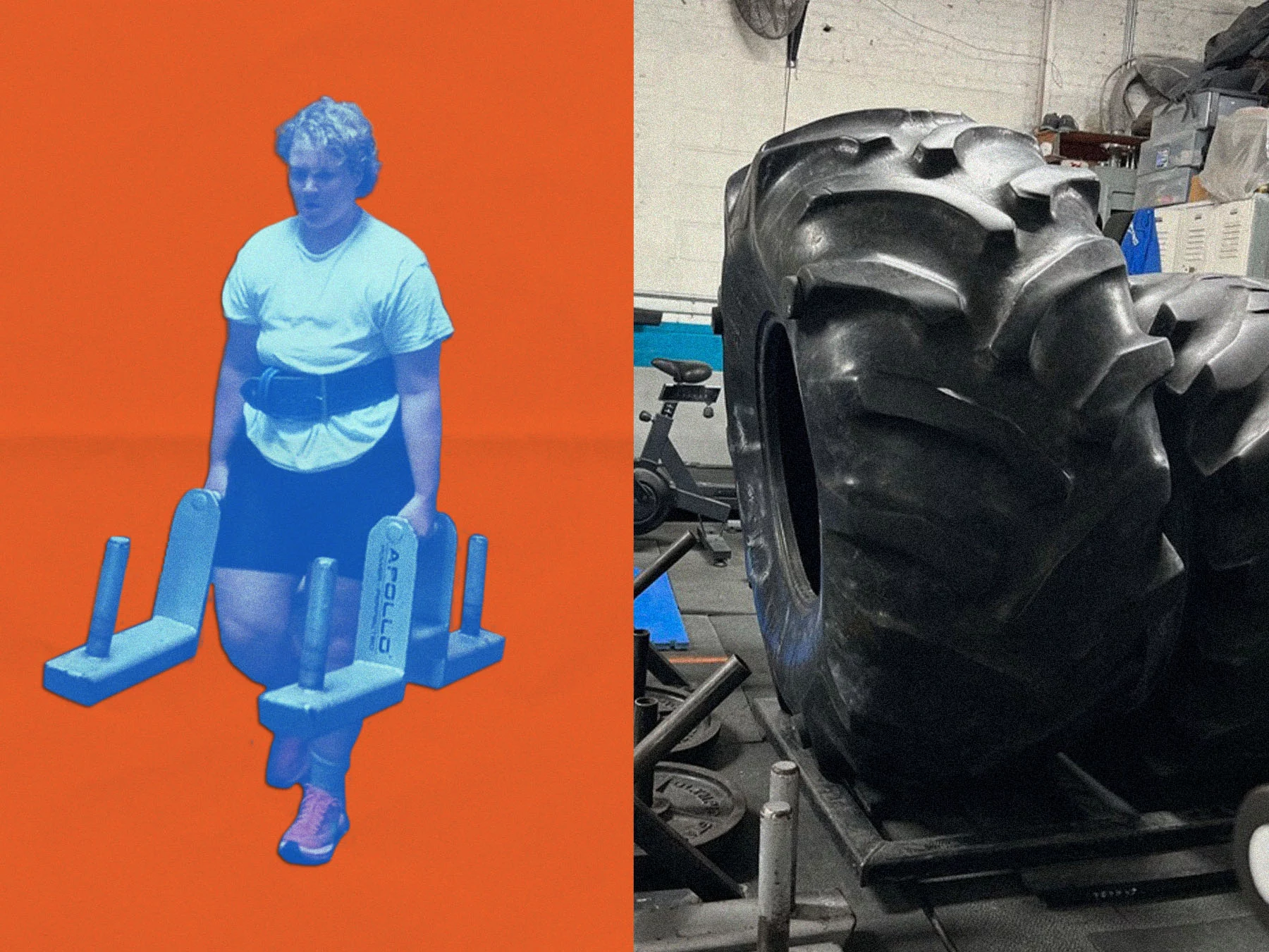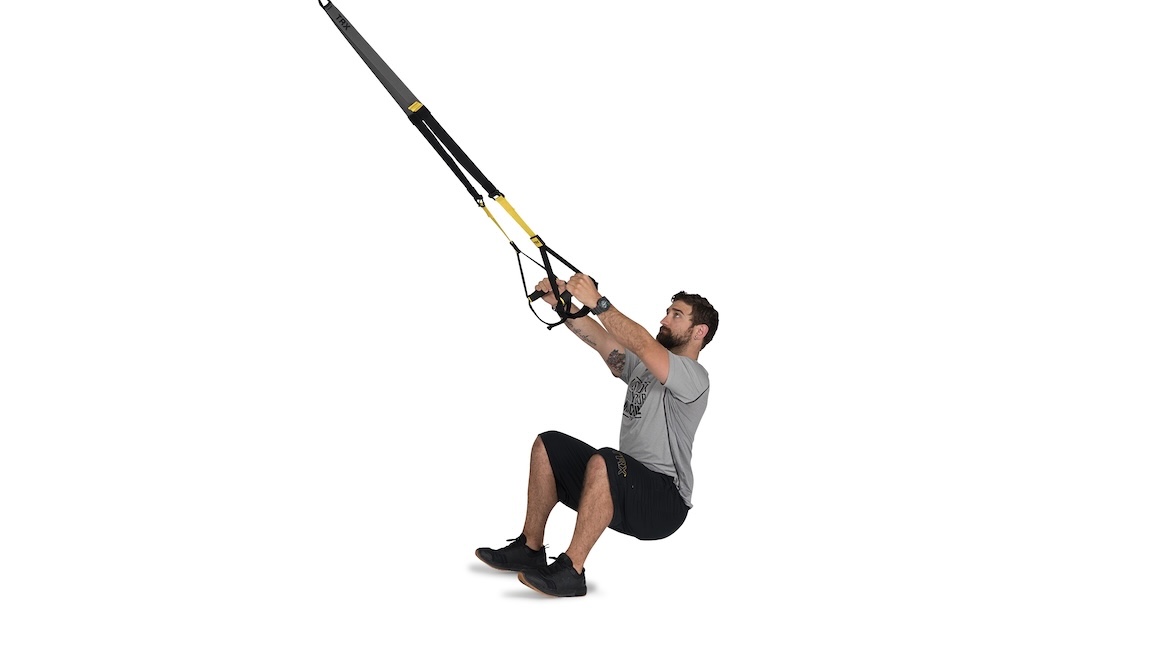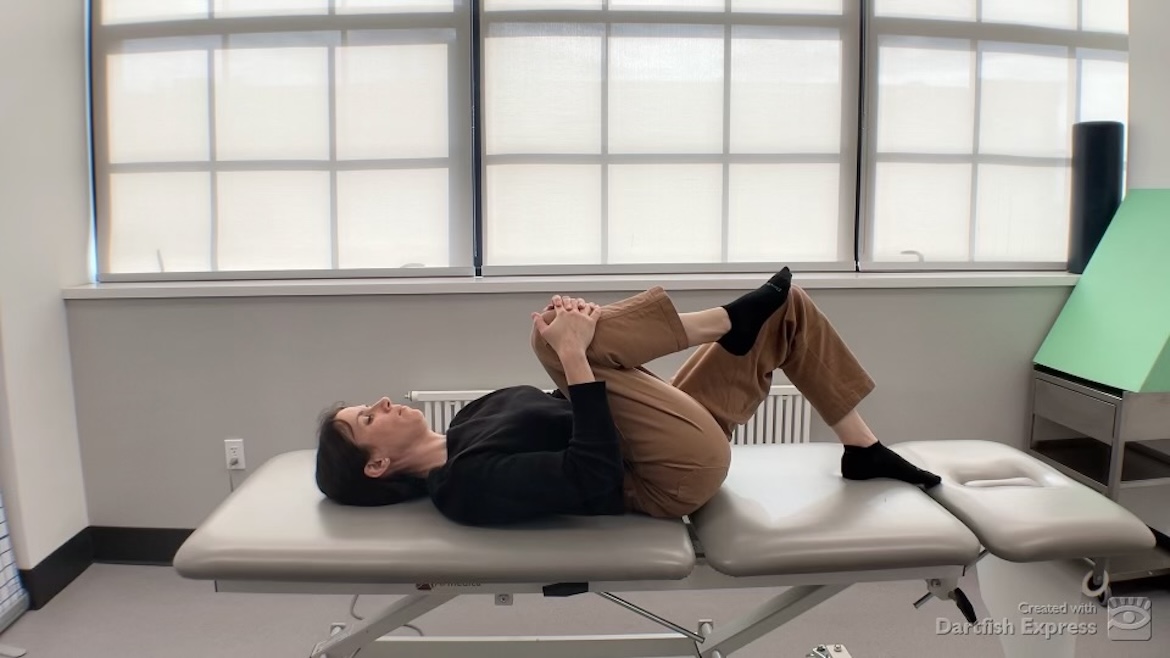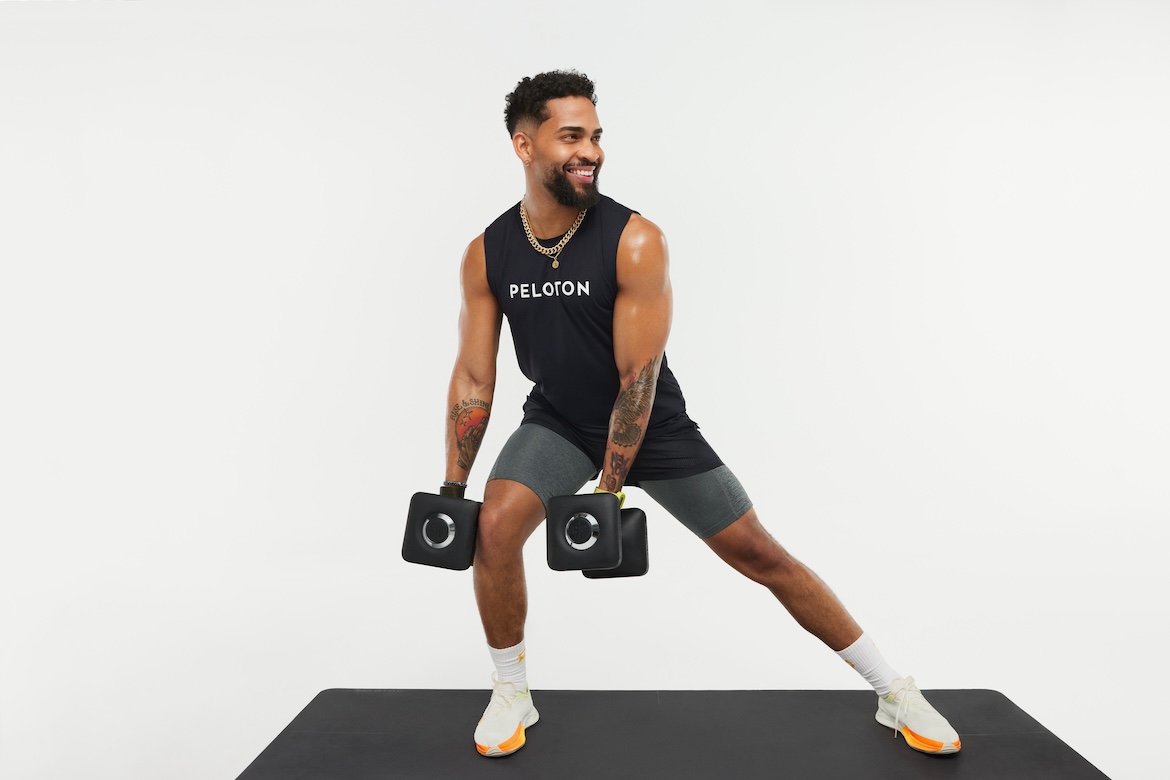Weightlifting Helped Me Shift My Fitness Goal From Getting Smaller To Taking Up Space—And I Feel More Powerful Than Ever
I’m no longer treadmill-hopping with the intention to shrink—now the only numbers I’m concerned about are in relation to the weight I can lift.
When I first stepped through the giant warehouse doors of the Global Strongman Gym, a powerlifting gym in Prospect Heights, Brooklyn, I saw a lot of unfamiliar equipment: tractor tires leaning against each other, squat racks reaching back to the far end of the gym, a gleaming silver bowl full of powdered chalk for improving your grip, and huge round concrete balls I would later learn are “Atlas stones” made for picking up and setting down very carefully.
Getty / Vladimir Sukhachev
If you told me on that first day that I’d soon be squatting down to push and then flip forward a 375-pound tire—only to squat down and do it again—I’m not sure I would have believed you. I definitely would have questioned the notion of soon graduating to the 450-pound tire. But that’s indeed what my future would hold.
In 2018, I was feeling insecure about my body and not great about how winded I felt after hiking up New York City’s subway stairs. I wanted to work out, but not somewhere packed to the gills with other people. Then, a friend recommended I drop by the gym where she works out by lifting weights and flipping tires—by taking up space. It was a much different approach than what I’d long associated with the gym-going experience, and I would soon find that by abandoning the treadmill-hopping habit I had taken up with a goal of becoming physically smaller, I’d open myself to the big life fitness could give me.
I signed on to train several times a week with Hans Pirman, owner of Global Strongman Gym, a powerlifting and bodybuilding coach with more than three decades of experience. When I initially told him that I didn’t want to get “bulky,” he brushed me off, saying my concern about bulk simply wasn’t the way to look at things. He suggested I was there to get stronger and that weightlifting doesn’t inherently make you bigger—unless that’s your goal. Through training and lifting, I would eventually come to realize that I was there to see what my body was capable of doing, instead of forcing it to look a certain way or become a certain size.
In the beginning, Pirman and I focused on basics: learning how to deadlift, squat, and bench-press. He also had me work out my core and lift smaller weights with moves like five-pound dumbbell flyes to build my smaller muscles as well as my larger ones.
Getty / Cunaplus_M.Faba
Calluses formed on my hands from learning how to lift the cement Atlas stones, and my chronic back pain started to subside (much to my surprise) as my core and back got stronger. Years of avoiding heavy lifting out of fear I would hurt my back melted away once I realized how much having and continuing to build strength stood to improve every area of my life. My reflexes got faster, I twisted my ankles less. I just felt so much more capable.
But my relationship with powerlifting hasn’t been perfect since 2018; it doesn’t follow a linear path of continuity. When the pandemic hit, I took a hiatus and opted to instead explore running, hiking, and working out at home. It wasn’t until this year that I got up the gumption to return to the gym and start lifting again.
My first few weeks back, I felt self-conscious and even embarrassed (though not surprised) about my diminished downshift in strength. However, just a few weeks in, I deadlifted 50 pounds shy of my highest personal record. (Experts say that it’s easier to regain muscle than build it from scratch, and I sure was glad to have found this to be true.) To me, this felt like coming home.
***
My relationship to fitness has been inextricably tied to my physicality and appearance. The very neutral truth is that I am fat. I am fat now and if I lost a significant amount of weight, I would still be fat. As a fat liberationist, I believe fat people deserve to live a full, expansive, good life with access to things non-fat people gain with ease. And, I don’t believe weight loss should be a prerequisite from that access.
Having this core belief doesn’t mean that it’s “easy” to exist in a larger body in our world, though. Messaging that supports a thin ideal abounds in mainstream American society, whether through enduring medical fatphobia, needing to buy multiple airline seats, perusing the jewelry section of a store while your friends try on clothes because it doesn’t carry your size, and not seeing fat people represented in advertisements or media.
These repeated messages are hard, if not impossible, to ignore. I’ve tried to escape the ever-present, gnawing pressure to conform via diet and exercise that comes with not being the size that the world thinks you should be. Nothing has ever silenced the buzz completely, but weightlifting has helped drown it out enough for me to realize I can live a beautiful life full of joy and excitement and complex feelings.
It’s taught me I don’t have to dedicate energy to figuring out how to be smaller and, by proxy, fit in with the masses. Only when my arms grew large enough to make my sleeves too tight (and my thighs did the same for my pants) after building muscle was it distilled for me that what I can do is more important than how I feel I should look.
Back when my sole fitness goal was to get small and stay small, I never felt powerful or capable. Weightlifting has helped in my journey to unpack my internalized fatphobia and celebrate the expansive, high quality of life I can live when my body is as well.
Getty / Corey Jenkins
That fear of bulking up, getting bigger, gaining weight—and I mean weight of any kind, fat or muscle—isn’t a just-me thing. Research has shown that women are less likely than men to practice weight training. According to Casey Johnston, weightlifter and journalist behind the Ask a Swole Woman column and author of the forthcoming Lifted, some of this is tied up in diet culture. “The number-one thing people don’t do to support their training, or their lives, is eat. They will do strength training but continue to diet aggressively because they are afraid of gaining even an ounce of weight,” Johnston tells me in an email. “If you don’t give [your body] food, it can’t heal.” As a result, you might not build as much muscle as you could—and might not get as strong as you could.For me, a key to unlocking weightlifting and strength training was realizing that fitness was about so much more than trying to be smaller. But my path to where I am now wasn’t just a hop, skip, and jump from being insecure about touching the weights section to loving the way that lifting makes me feel (sturdy and like I take up more space). My arms, legs, and thighs all bloomed with red stretch marks a few months into lifting. When the stretch marks first appeared, it felt like I was back at square one, contorting my body in weird angles to look at them and fretting that they were a sign of something “bad.”
Beginning to feel comfortable with my body’s changes took patience, and research, and following people on Instagram who have bodies that look like mine—tall, fat, and increasingly butch-presenting. I needed a sense of community to feel good in my skin. (Take those stretch marks: These folks helped me see that the skin is an organ, and stretch marks are just a function of it. They were a sign that I was doing different things, moving in different ways, changing shape. They’re morally neutral regardless of their cause.)
In addition to focusing less on my physical appearance and more on my level of strength, I started to read writing from women and non-binary writers and influencers in the fat liberation space, like Johnston, author and Maintenance Phase podcast host Aubrey Gordon, fat liberationist and author Maggie McGill, Kanoelani Patterson, LMSW, yoga practitioner and author Jessamyn Stanley, and plus-size weightlifting influencer Meg Boggs.
The more I learned from people in the fat liberation space, the more I realized that working out didn’t need to be about losing weight. Despite first visiting the gym in 2018 because I was feeling less than confident about my weight, lifting weights did, in fact, make me gain weight. I started to realize I needed to eat more protein if I wanted to reach my goals of deadlifting over 300 pounds, benching over 200 pounds, and flipping the 450-pound tire with ease. And I’ve come to realize that weight gain due to muscle versus fat is a distinction that doesn’t matter when you’re not interested in taking up less space.
“As a fat person and liberationist, strength training is my favorite form of movement because I don’t have to worry about being judged for being out of breath or too slow,” says McGill. “In fact, I’m often stronger naturally because of my weight. It’s a form of movement where my body has an inherent advantage.”
This sentiment of size actually being an asset for some forms of exercise is something Gordon describes in her book What We Don’t Talk About When We Talk About Fat, recounting her experience on the swim team as an adolescent. “My strongest stroke for the competition was the most complicated: I swam butterfly. Later, in adulthood, I would find a secret sisterhood of other fat-kid swimmers, all of whom swam the fearsome butterfly…Our bodies weren’t held back by their fat—to the contrary, they were powered by it. The momentum of our fat bodies propelled us forward, harder and faster than other swimmers,” Gordon writes.
This sentiment builds on what I started to learn in the gym: Sometimes, being big has been a strength. I am naturally strong, and am inclined to pick up heavy things. The years I spent being a slow runner always made me feel like I’d never have an innate physicality for a sport. Now, though, I take pride in the fact that I am willing to run at whatever my speed is. That’s not my strong suit, but my strongman lifting is—and that feels awesome.
“Strength training brings the freedom and confidence to say ‘yes’ to activities I might have skipped out on previously,” says McGill. “For example, if a friend asks to go kayaking or hiking, I know that my body is strong and capable of handling those activities. One of my favorite parts of strength training is getting more in touch with my body and knowing its capabilities, whereas before [having a strength-training practice], I was only focused on its limitations.”
***
The health and well-being benefits of strength-training are far-reaching and sprawling, like tree roots you can’t necessarily see. Sure there’s the tree of it all: the literal, immediate, concentrated endorphins experience that you get when you’re doing the activity, but then there are the mental benefits that you get outside the gym. The evidence of my hard work is clear in the thickness of my arms and thighs, how I can pick up heavy things in and outside the gym with ease. The roots of my hard work dig deep beneath the surface, too. It instills a sense of competence in me: that I am capable of doing hard things.
There’s also the decreased risk of injury and the possibility of improving various causes of chronic pain that furl out beneath me like a vast root system that supports the health of its blossoming maple above ground.
“When I stopped focusing on weight loss, weight training became more than just exercise: It was a gateway to more balance, strength, and confidence,” says McGill. “When I was stuck in the body-shame mindset, I never stuck with a weight training plan long enough to see the results.”
To Johnston’s point of view, the future of inclusive weightlifting looks optimistic: “I want to think we are overall moving forward,” she says. “I see gaggles of teens in the weightlifting section of gyms giving each other form tips. While I don’t doubt they are experiencing their own wave of challenges to their self esteem from social media and the media in general, I think the education level on what a more balanced routine that skews away from cardio and calorie burning can do from you is rising.”
Now, what sends me to the gym is curiosity about what I am capable of lifting, pushing, pulling, and flipping. No longer is my driving force anything related to what I might see (or not see) in a mirror. And with this shifted focus away from understanding exercise as a vehicle to shrink, I’ve grown in the best ways. The number I’m most interested in isn’t on a scale or a treadmill—but on a weight: specifically, when I’ll be ready to flip the 700-pound tire. I have a ways to go, but it’s a goal that I feel great about—one that has nothing to do with the size of my body, but rather the power it can generate.








